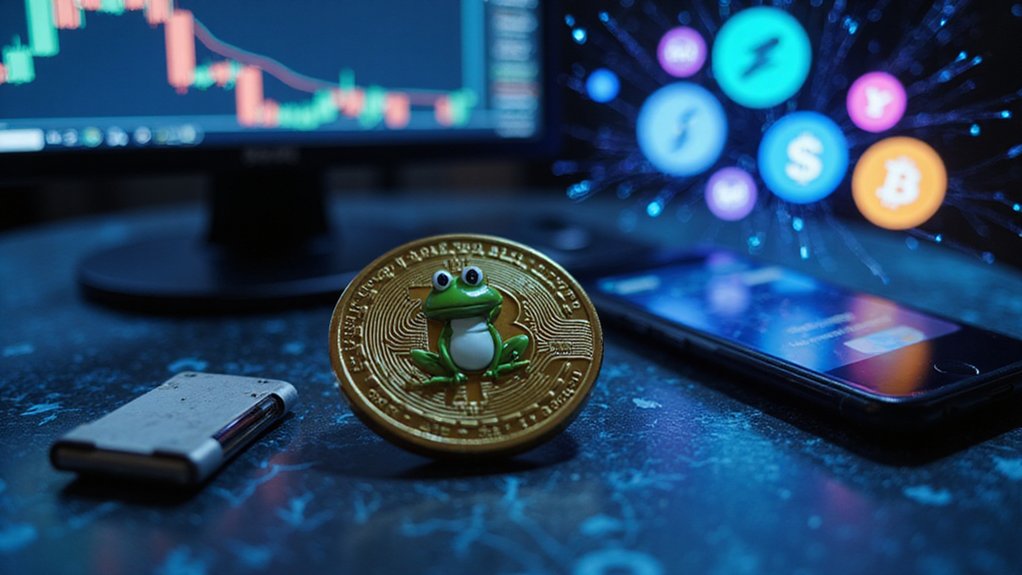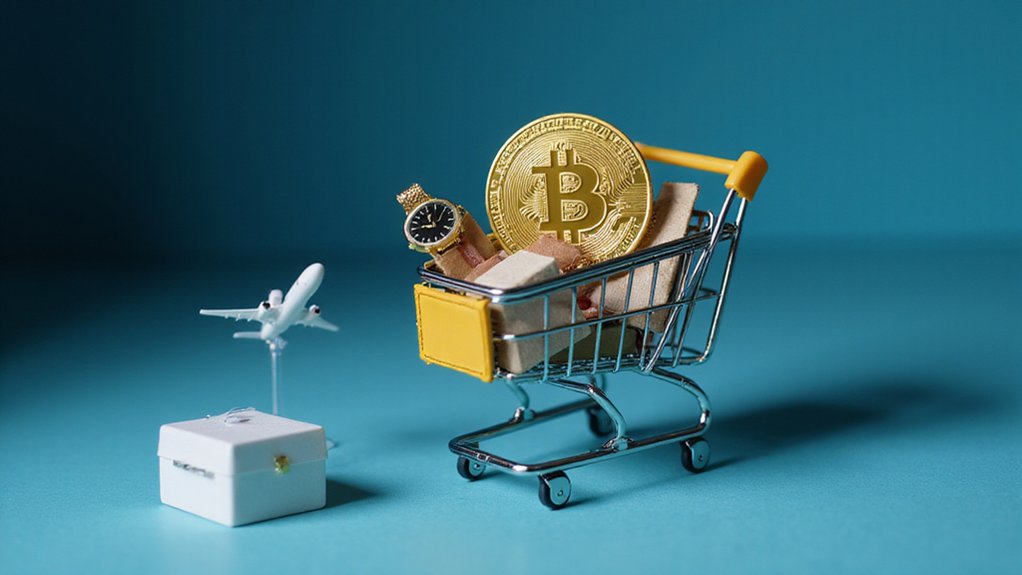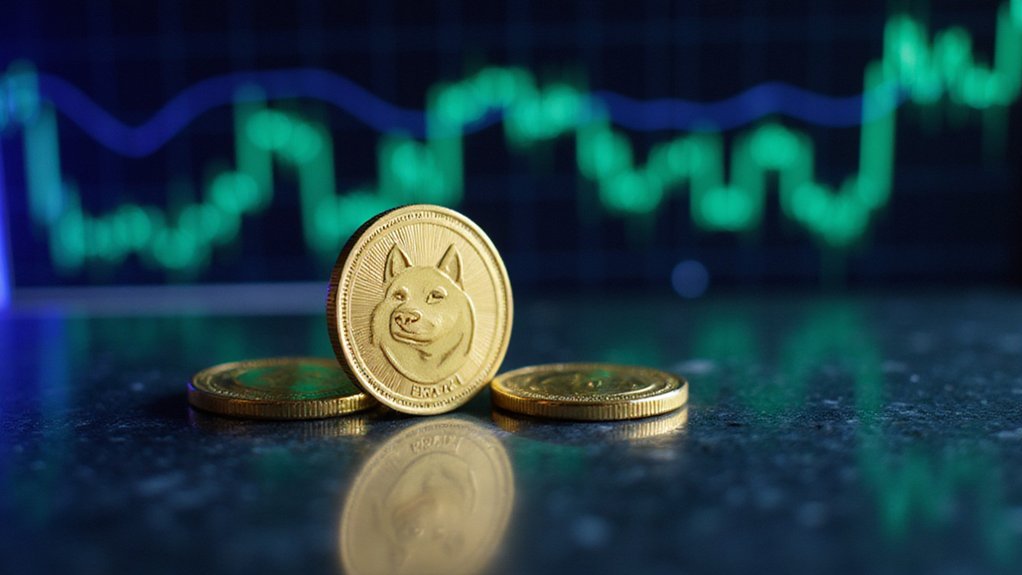Creating a meme coin requires selecting an appropriate blockchain platform (Ethereum, Binance Smart Chain, or Solana), conceptualizing a token with viral potential, developing a smart contract (either through direct programming or user-friendly tools), and building community momentum. The process involves technical considerations like decimal places and supply parameters alongside deployment costs ranging from minimal to several thousand dollars. Regulatory scrutiny looms increasingly large over these projects, a sobering counterweight to the allure of internet-fueled financial alchemy.

While traditional financial markets continue to operate under increasingly arcane regulatory frameworks, the cryptocurrency universe has carved out a peculiar niche where internet culture and speculative investment converge in the form of meme coins.
These community-driven tokens—exemplified by the meteoric rises of Dogecoin and Shiba Inu—capitalize on cultural references and social media virality to generate speculative value, often defying conventional investment logic.
Speculative tokens thrive at the intersection of internet culture and financial speculation, turning memes into market movements through collective participation.
The journey begins with selecting an appropriate blockchain platform.
Ethereum remains the grande dame of token creation, though its transaction fees (gas) can prove prohibitive.
Alternatives like Binance Smart Chain offer respite from Ethereum‘s congestion, while Solana and Polygon provide superior scalability—a non-trivial consideration for projects anticipating substantial transaction volume.
Each platform presents distinct trade-offs between established ecosystems, transaction costs, and processing speed.
Conceptualizing the meme coin requires finesse.
One must strike the delicate balance between absurdist humor and market differentiation.
The token’s theme should resonate with its intended audience, whether crypto enthusiasts or broader internet denizens.
This conceptual foundation subsequently informs the token’s name, symbol, and supply parameters—elements that, however superficial they may seem, often determine a project’s memorability.
Smart contract development constitutes the technical cornerstone of any meme coin.
Those lacking programming expertise might engage experienced blockchain developers or utilize user-friendly token generators like Solana Token Creator, which enables token creation for approximately 0.3 SOL without extensive coding knowledge.
The development process typically incurs various expenses including deployment fees ranging from a few hundred to several thousand dollars depending on the chosen blockchain platform.
When setting up your token, you’ll need to specify the number of decimal places, typically nine for most meme coins.
Regardless of the approach, security audits remain imperative to identify vulnerabilities before deployment.
The concluding—yet potentially most vital—step involves fostering community engagement.
A meme coin’s value derives primarily from collective belief rather than intrinsic utility, rendering community building indispensable.
Strategic social media presence, interactive platforms, and consistent messaging create the perception of momentum that often becomes self-fulfilling.
For inspiration, look to successful examples like Pepe Coin which gained substantial popularity through its connection to internet culture.
One should note that regulatory scrutiny of cryptocurrency projects continues to intensify.
What begins as an entertaining foray into blockchain technology may eventually encounter complex legal considerations—a sobering reminder that even internet jokes exist within regulatory frameworks.
Frequently Asked Questions
How Much Does It Typically Cost to Launch a Meme Coin?
Launching a meme coin typically costs between $5,000 and $30,000, depending on several variables.
The budget encompasses smart contract development ($1,000-$5,000), blockchain deployment fees ($30-$100), security audits ($3,000-$10,000), and marketing expenses ($2,000-$10,000+).
Exchange listings represent another significant expenditure—decentralized platforms require modest fees (hundreds), while prestigious centralized exchanges command premium rates (upwards of $50,000).
It could be argued that the financial barrier to entry remains surprisingly accessible, considering the astronomical market caps some successful meme coins achieve.
Can Meme Coins Be Created Without Programming Knowledge?
Yes, meme coins can indeed be created without programming knowledge.
Various platforms like Solana Token Program and Smithii offer user-friendly interfaces that facilitate token creation through simple form-filling processes.
These no-code solutions handle the technical backend operations while creators focus on conceptual elements—name, supply, and tokenomics.
While programming-free approaches democratize creation, they don’t eliminate the need for understanding blockchain fundamentals and market dynamics (nor do they mitigate the inherent volatility such speculative assets invariably demonstrate).
What Legal Considerations Should I Be Aware Of?
Creators should note that while meme coins typically escape securities classification (sparing them from SEC registration requirements), they’re hardly in a legal free-for-all.
Anti-fraud provisions still apply rigorously—misleading statements about potential returns remain prosecutable regardless of asset classification.
Prudent developers implement robust disclaimers, guarantee transparency about speculative nature, and navigate intellectual property constraints.
State-level regulations, AML/KYC considerations, and tax reporting obligations further complicate the landscape that some enthusiasts naively assume is regulation-free.
How Do I Protect My Meme Coin From Potential Rug Pulls?
To protect a meme coin from potential rug pulls, developers should implement several critical safeguards.
Liquidity locking prevents sudden sell-offs, while multi-signature wallets guarantee no single entity can drain funds.
Token distribution should be decentralized (the concentration of holdings in few wallets being a classic red flag), and ownership renouncement post-launch removes developer privileges that could be exploited.
Regular independent audits and transparent communication complete this protective framework—though in crypto’s Wild West, vigilance remains perpetually necessary.
Can Meme Coins Generate Passive Income for Creators?
Meme coin creators can indeed generate passive income through multiple avenues.
Token allocation reserves typically earmark a percentage for development teams, while transaction fee redistribution mechanisms funnel a portion of each trade back to creators.
Staking platforms offer another revenue stream, as do royalties from NFT integrations.
The creator’s wallet—assuming they’ve maintained their position—benefits from any value appreciation, though success hinges precariously on community engagement and market sentiment rather than intrinsic utility.
Such is crypto’s peculiar economy.









